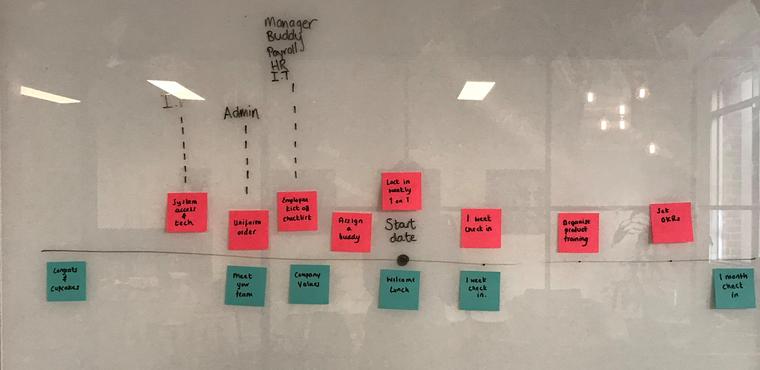


Give your people a voice with a tailored Xref Engage survey.
Increase retention and reduce turnover with quick employee feedback from an Xref Pulse Survey.
Most people know how important onboarding is.
If you aren’t aware, there are reams of studies and research papers that show culture, retention, productivity, engagement, employee satisfaction, are significantly impacted, and even customer satisfaction, profitability and business valuation (yes business valuation!) are all affected by onboarding. The business case to start using a formalised onboarding process could not be stronger.
PLUS, if you add on the costs associated with losing employees and the long-term brand damage caused by negative stories and perceptions both inside and outside the business, the opportunity to be one of the most effective leaders in your field is now.
The evidence is stacking up. First impressions have more clout than ever before.
However, this post is not designed to persuade you that onboarding is important, it’s to show you how to build the best damn onboarding experience in your industry, in one afternoon.
So if you aren’t convinced that onboarding should be a top agenda item. Check out the research and schedule a reminder in your calendar to come back in a couple of weeks.
So firstly, even if you don’t have a deliberately designed ‘onboarding experience’, you have one by default. If you do have one, congrats! But let’s see how you are doing.
1. Who owns onboarding in your organisation?
2. Who is responsible for improving your onboarding experience?
3. How is onboarding done? What experiences are you delivering?
4. How consistent is your onboarding experience across your organisation?
5. Is your onboarding process paperwork-heavy and focused on employer needs?
6. Do you communicate with new hires before their first day?
7. Are you aware of the impact that onboarding has on your organisation’s performance metrics?
8. How do you measure the new hire experience?
Answering these questions alone will probably make you aware of some obvious areas of improvement. If not, grab yourself a glass of wine, pat yourself on the back, and get Googling.
With your wine in one hand and a pen in the other, write down the top brands in your industry who are known for their employee engagement – and stalk them. Chances are they will brag about their amazing programs BUT if they keep quiet and you are at a loss, shoot an email to the office asking if they know any employees from X company.. and offer to buy them a wine to get some info for you about their onboarding experience.
Redesigning the whole onboarding experience can be a daunting task.
There are many segments, scenarios, moving parts and stakeholders. But don’t fret, we have helped over 120 large (and very complex) businesses set up their onboarding programs with great success ( and we’ve learned a few things along the way too). Here we will share the process we take our customers through so you can do this yourself, in one afternoon.
First, let’s focus on building your ‘default’ onboarding experience. This is the one that the majority of the company will go through, by default. Typically, our customers segment their onboarding into different workflows for different departments, geographies and employee types (part-time, casual etc). We always recommend they start with their basic onboarding journey first.
1. Find a white board (or A3 sheet of paper) and two sets of sticky notes in different colours and draw a horizontal line through the middle of the board, with a big dot in the middle indicating the employee start date. This gives you room to plan for 28 days before the start date (typically when someone would sign their contract) and 30 days afterwards.
2. Map out your current process on this timeline with sticky notes, placing all employee actions and experiences on the bottom half of the board, and manager/stakeholder actions on the top. Here are some examples to get you started:
3. With some different coloured sticky notes map out the things you would like to add to this timeline, focusing 100% on employee experience, and use your competitor research as a benchmark.
You will now have your first employee onboarding program plan which should look a little like this:

At this stage, we work with our customers to automate this entire process and build the workflow out, but as you are probably not an Enboarder customer, your next steps would be to review the functionality of your existing tech stack and work out what you can automate and what needs a manual process.
The key to success lies in the technology you use. By shifting the heavy lifting you can forget the manual tasks and processes and focus on optimising the journey for employee experience.
If you would like to book a free consultation with one of our onboarding specialists, please visit our website.